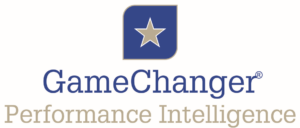Julien Clement, an assistant professor of organisational behavior at Stanford Graduate School of Business has been considering How to Stay Ahead When the Rules Change (link).
To explore this staying ahead in business, Julien looked at eSports professional multiplayer games. He noted:
the elements of business competition are there: eSports teams are high-stakes, profit-seeking enterprises that can earn millions of dollars a year and that use strategy and tight coordination in an arena where sudden and unforeseen changes occur in the form of game updates.
Julien looked closely at a game called Defense of the Ancients 2. Lee Simmons (2019) (link) in a review of Julien’s work observed:
His theory was that something in the very structure of organizations — of any sort — shapes how the individuals inside them see the world. And that worldview, in turn, can make them slow to adapt.
In Defense of the Ancients, disruption comes in the form of revisions to the game’s code. Julien’s research considered “when these updates came out, would teams revise their game plan, or would they continue with the same plan and just swap in stronger heroes?” Would this be systemic change or “business as usual with different personnel?”
He noted:
- When hero abilities changed, most teams responded only by switching heroes.
- Only after a lag of several weeks did some begin to revise their strategies.
- Immediately after a change, teams were less innovative than in stable periods.
- Small, nimble teams exhibited the same inertia that big corporations exhibit when faced with change.
- It was a failure to recognize the full, systemic implications of external change.
- Firms fail to adapt when they focus on specific tasks at the expense of system-wide behavior.
Julien pondered if in “times of tumult, could strong leaders guide their organization’s adaptation?” He noted:
information flowed in a hub-and-spoke pattern from the leader to the other players. In others, the flow was more even and distributed, as players seemed to be mutually adjusting to each other rather than just listening to the captain.
He added:
Teams with flatter structures, where everybody seemed to be talking and contributing, were more likely to recognize the need to look for a new strategy rather than just swapping in new heroes. Only when the updates had an obvious and direct system-wide effect, such as far-reaching changes in the rules of the game, did teams with dominant leaders adapt faster.
Julien observed:
A central leader may speed things up when it’s fairly clear how the organization should respond to change. But when the problem is to figure out how to respond, a less hierarchical structure might be more effective.
His conclusion to this research was:
Companies might view change as an opportunity, especially when the consequences of the change aren’t immediately obvious. When things are moving fast, it’s natural to narrow your focus and concentrate on keeping the ship on course. But it might be smart, this study suggests, to take a step back and think about where you’re headed and how the entire organization works.
This conclusion resonates powerfully with Sports Wizard®’s work in the organic structure of organisations (integrated, strategic and sustained success) and its use of intelligence augmentation (link) in all its projects with partners.
Photo Credit
Defense of the Ancients 2 (Defense of the Ancients 2)









